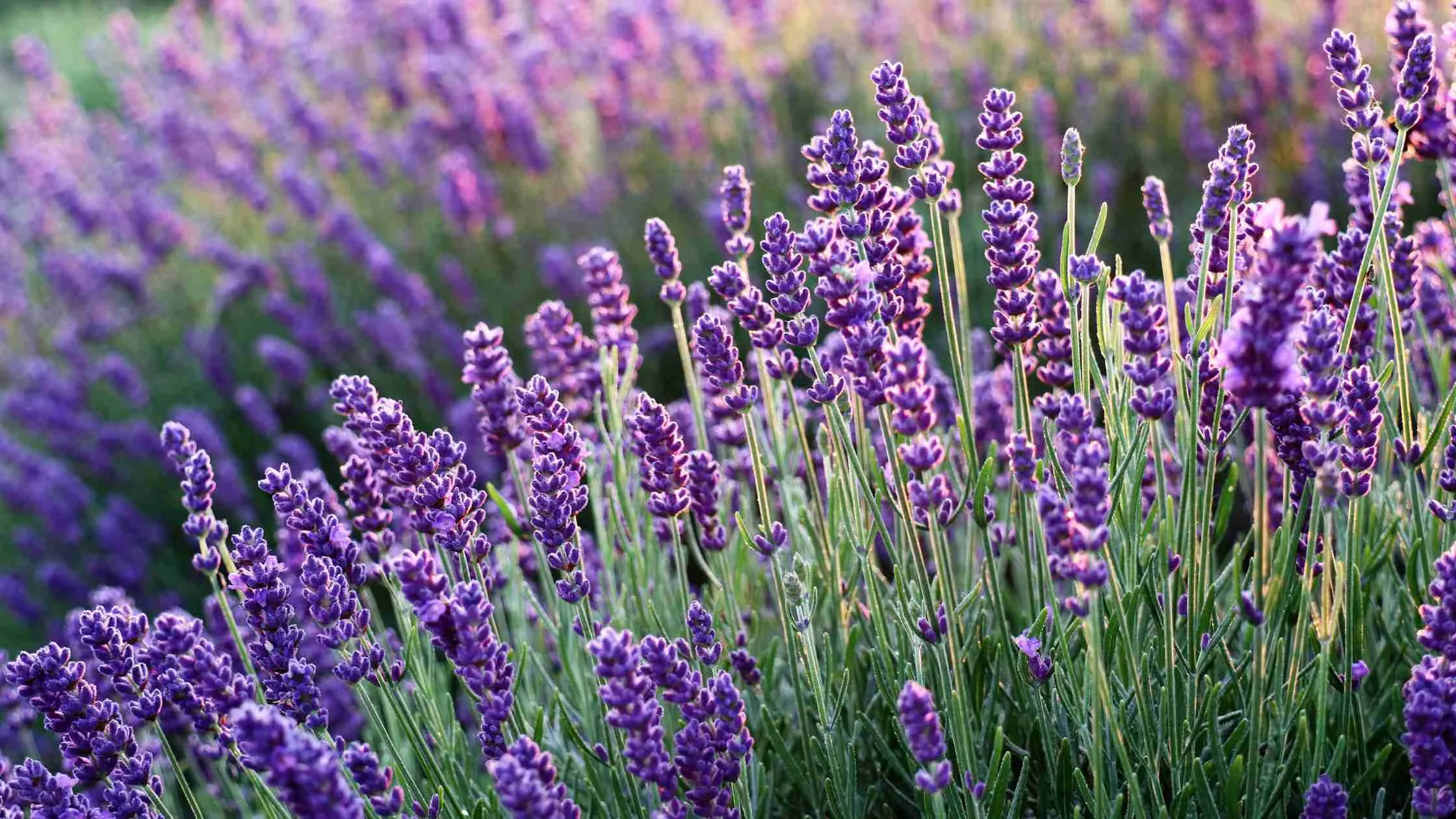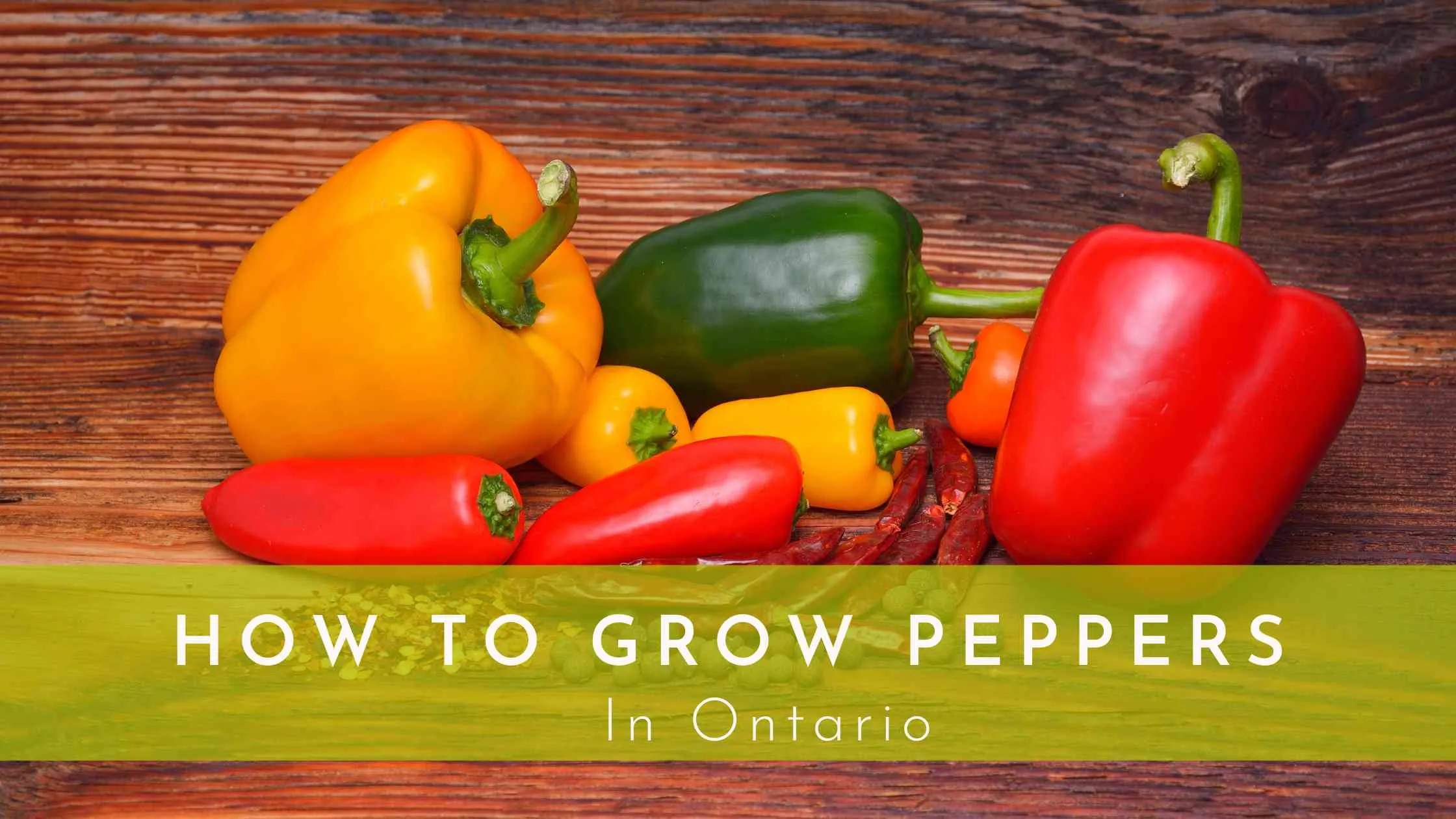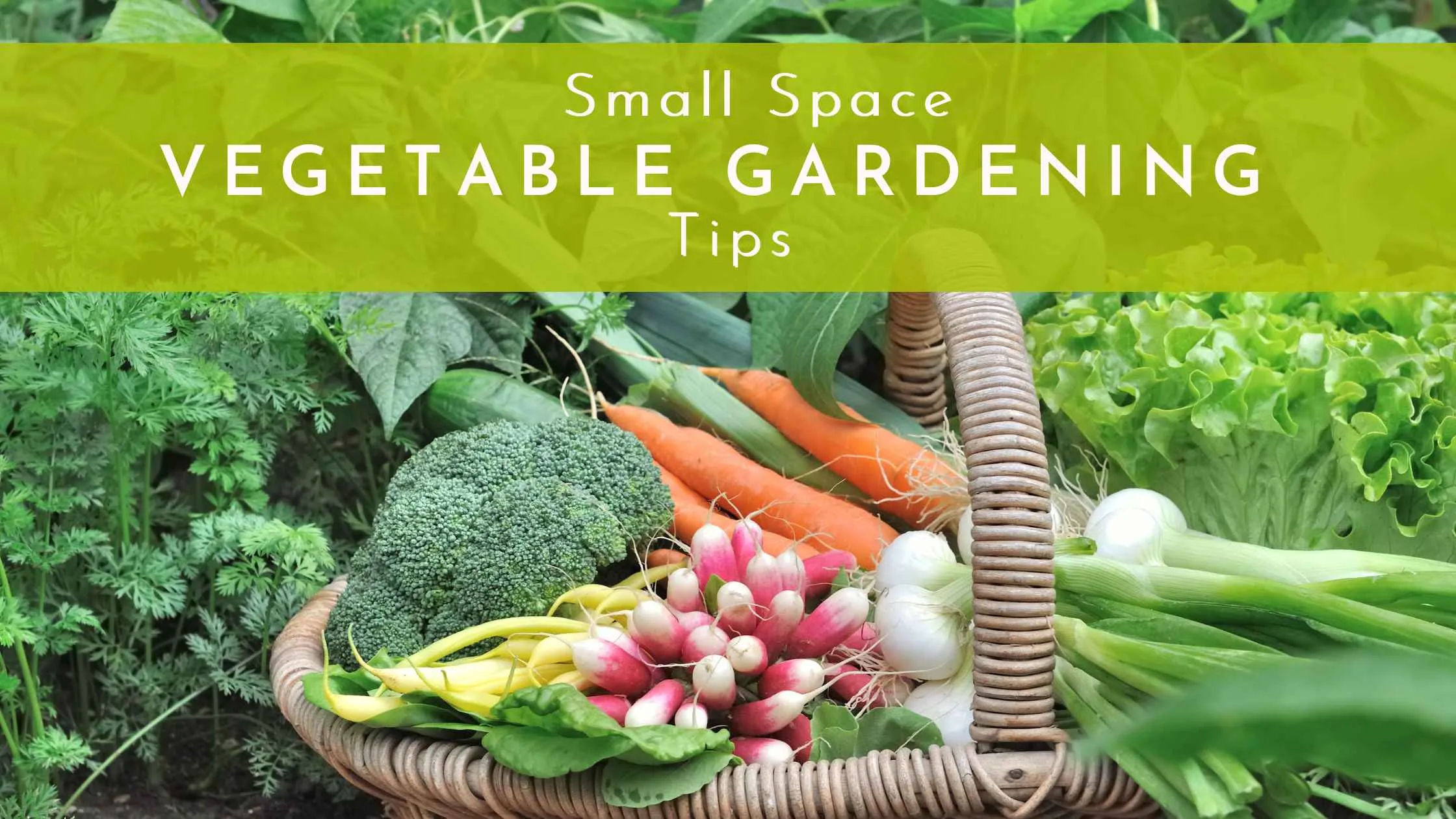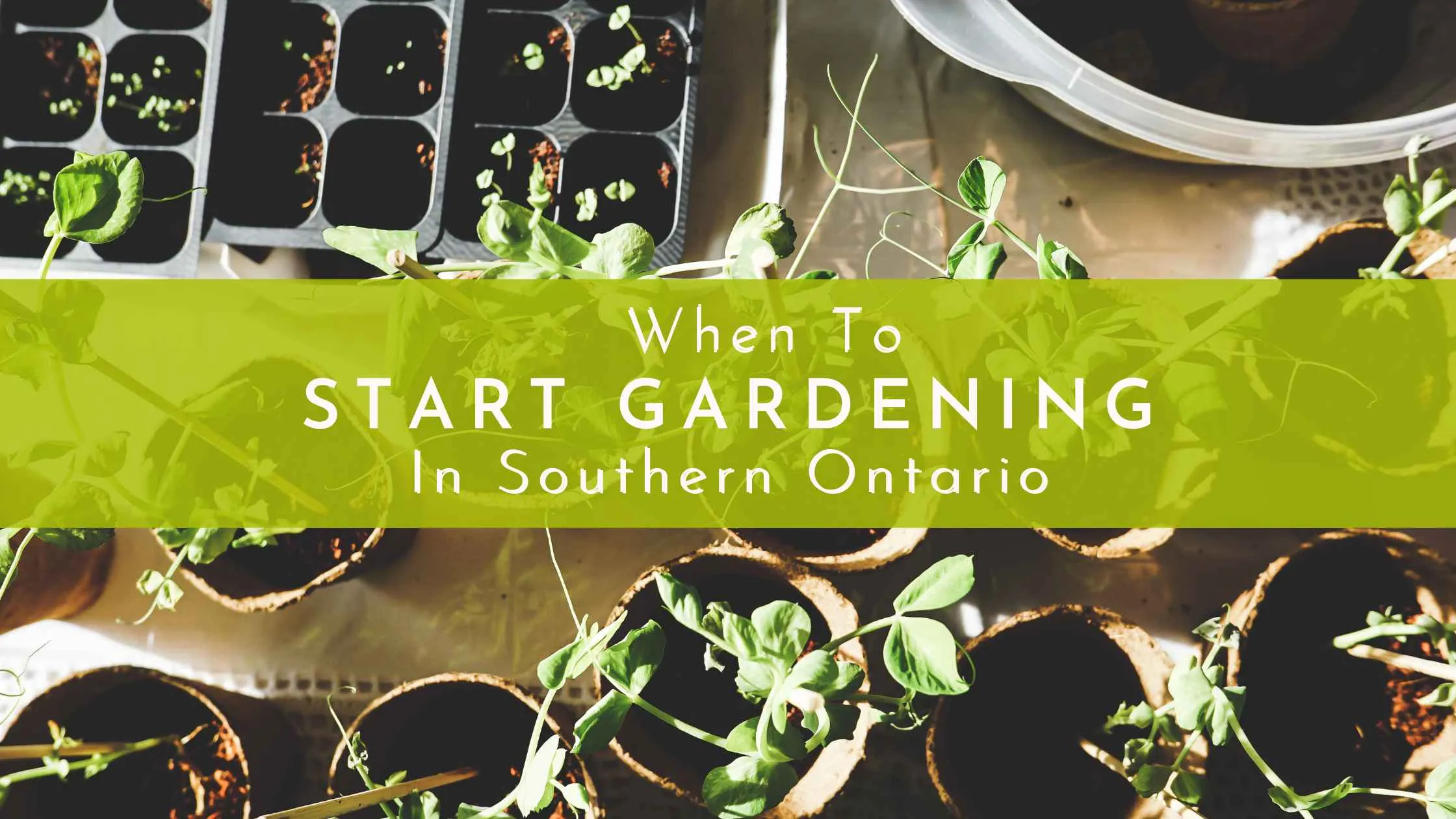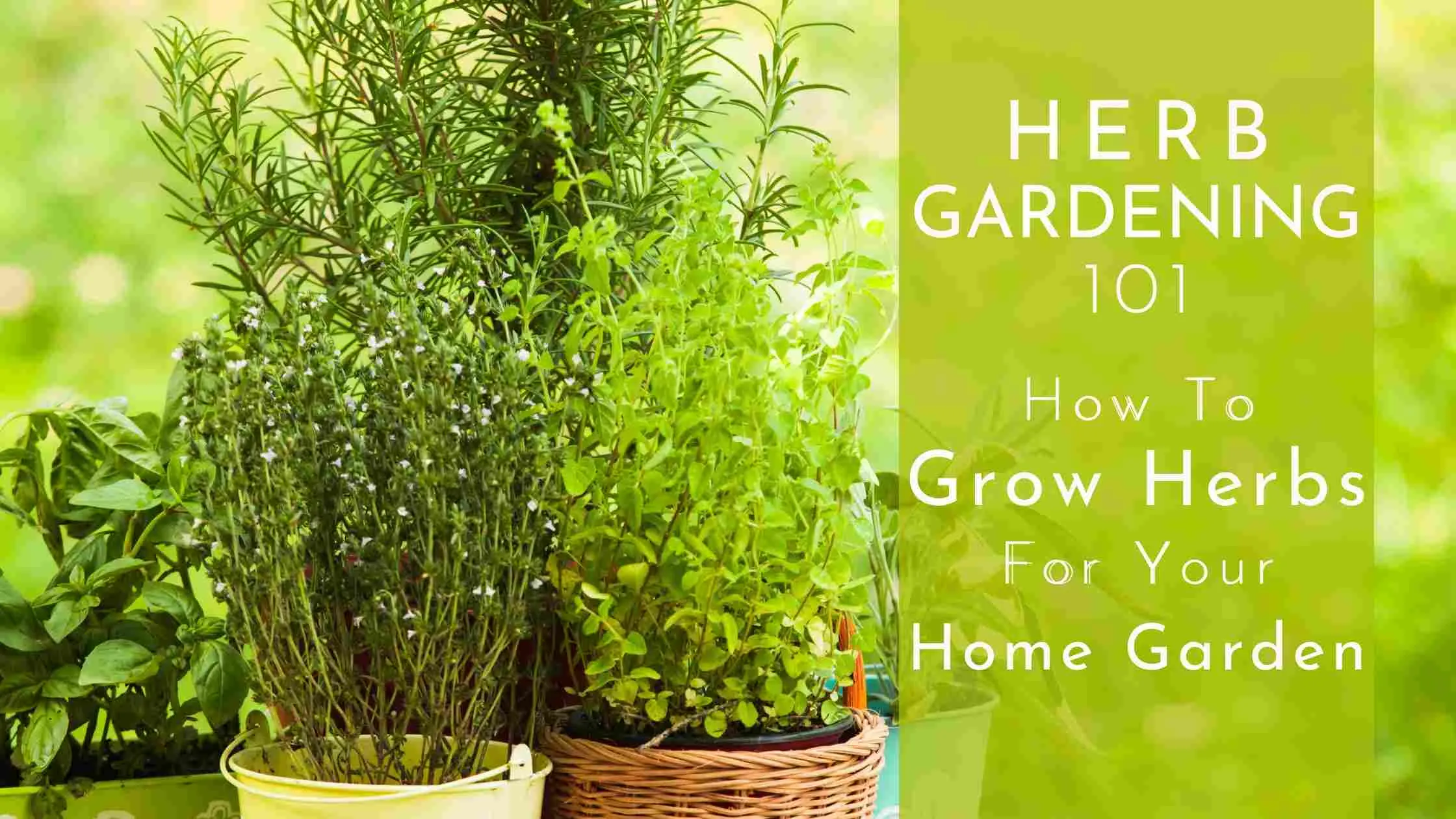Grow Edible Flowers In Your Home Garden
When someone says flower, most people think of a beautiful and colorful part of a plant used for ornamentation. But do you know that flowers can also be used for other purposes?
While planting a kitchen garden, most people think of fruits, herbs, and vegetables without knowing that flowers are also a part of a kitchen garden. Many edible flowers can be used as a source of beauty or decoration as well as a source of flavor in your food.
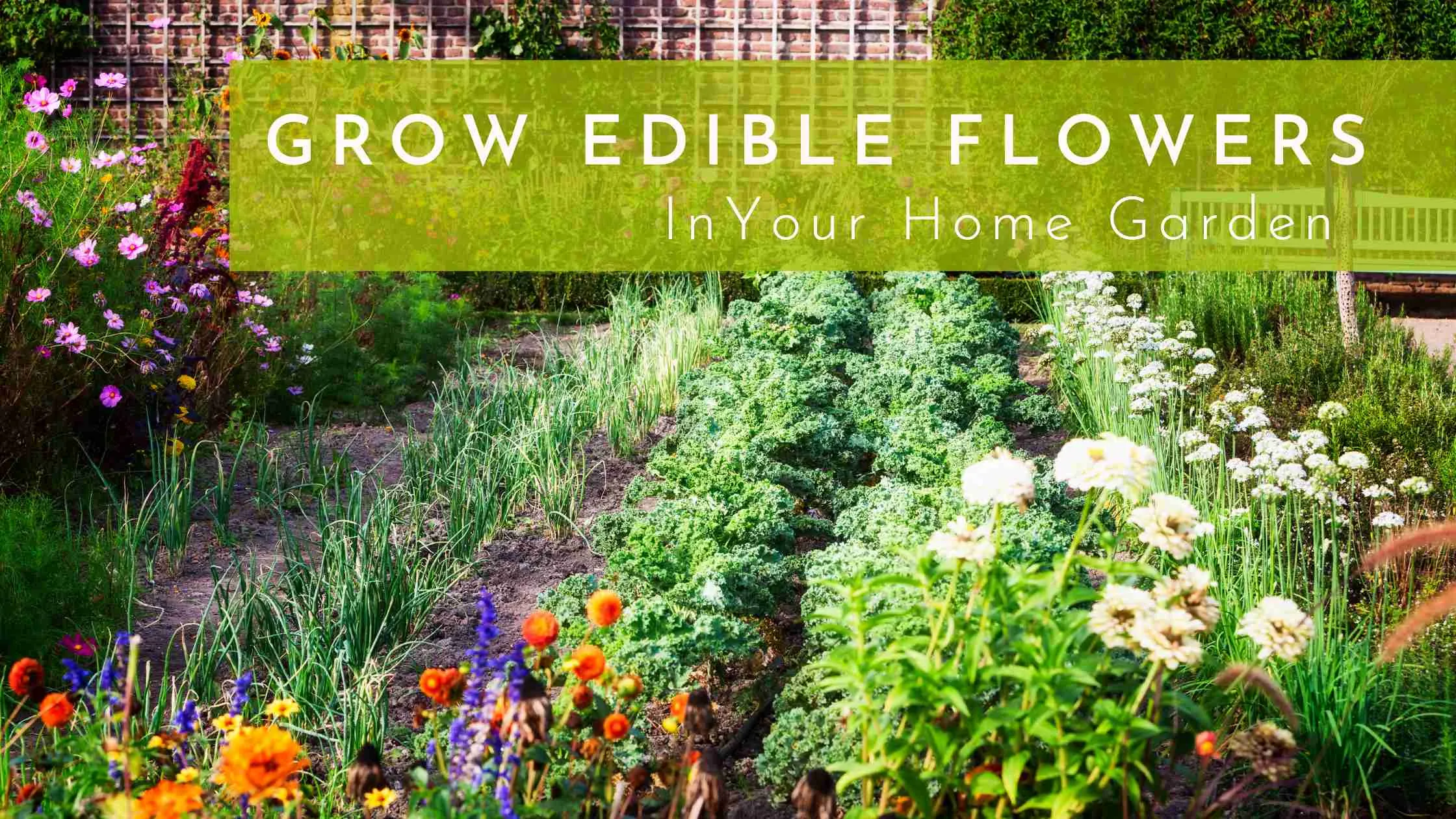
This article will help you to know edible flowers better and how to include them in your cooking. But before doing that, let's talk about some other advantages of growing edible flowers.
Why Grow Edible Flowers
Growing vegetables, herbs, and fruits give you produce readily available in your garden. But if you grow edible flowers in your garden, you will enjoy other benefits too.
Edible flowers enhance your garden’s beauty giving you a pleasing fragrance and you can add them to many dishes. Add edible flowers to your meals and enjoy unique and delicious tastes.
The flowers are also packed with vitamins and minerals, which means they are healthy as well. You can use edible flowers fresh or dried, as a whole, or as a condiment. You can infuse them in a dessert or add them to salads and savory dishes. They can also be used in a drink, raw cooked, or even pickled.
How Do Edible Flowers Taste?
Edible flowers provide a range and variety of tastes. Some taste tart, some bitter and some have spicy flavors. Other edible flowers are sweet such as lavender, rose, and dandelion. You can use these flowers in different dishes and enjoy their unique taste.
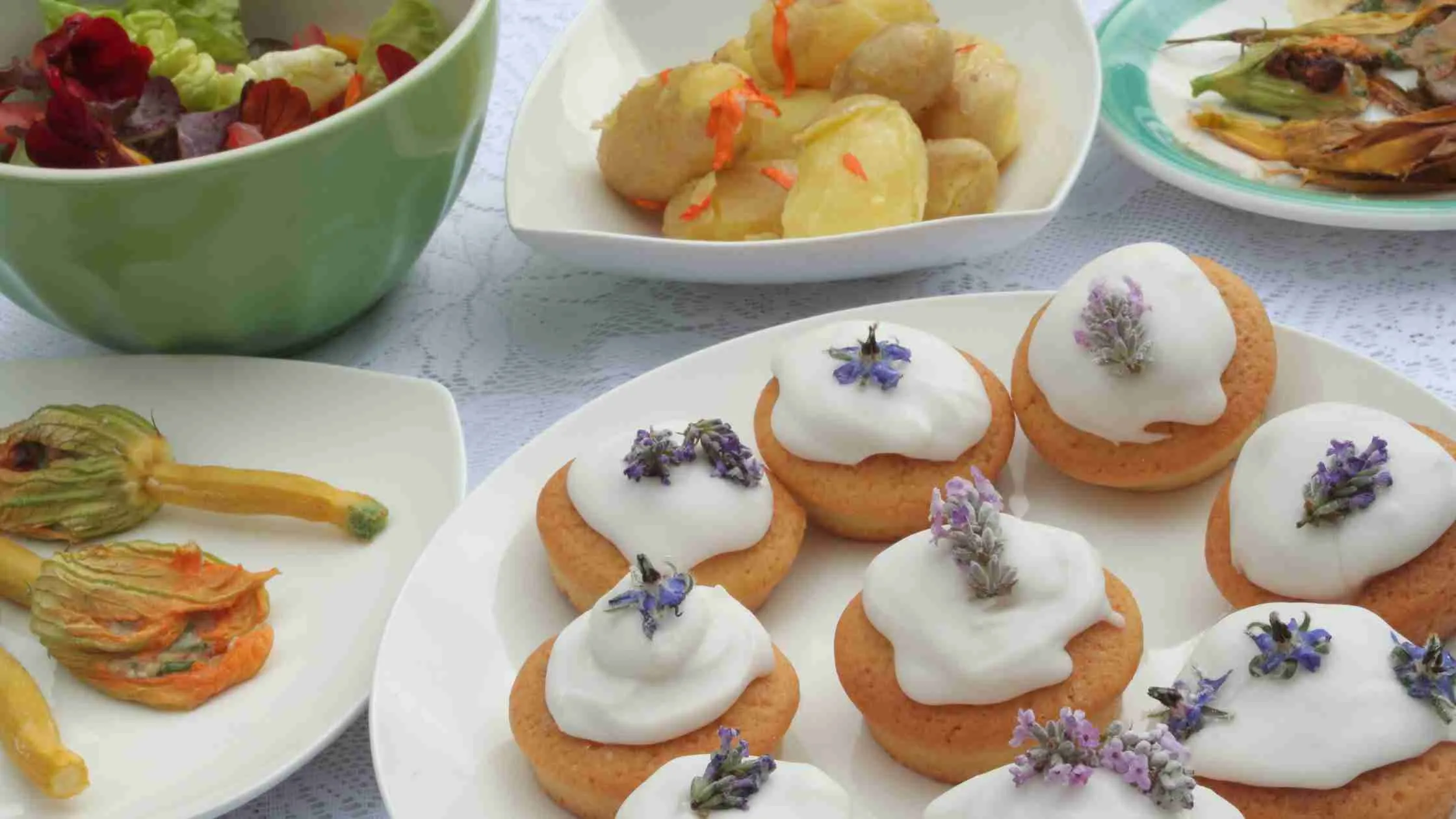
How To Grow Edible Flowers
Growing edible flowers is as easy as growing any herbaceous plant. If you are planning to grow only a few, you can simply purchase edible flower plants from the garden center.
If you’re growing edible flowers on a larger scale, you can start from seeds. Here are the basic things to keep in mind while growing edible flowers (or any crops really):
- Start with a sterile seed-starting mix
- Label all your sprouts as they look the same in the beginning
- Keep a thick layer of nutrient-rich topsoil
- Avoid over-watering, washing out, or damaging seedlings
- Once growth starts, avoid overcrowding and pulling to prevent root disruption
- To avoid problems with sprouts not growing, you'll need to keep them in an area with a sufficient supply of sunlight
- When your flowers grow bigger and stronger, you can use some in your recipes. Pick the freshest flowers, the ones that are fully bloomed but before wilting
- When your flowers grow bigger and stronger, you can use some for your recipes. Pick the freshest flowers, the ones that are fully bloomed but before wilting
- Use the flowers in your meals on the same day of harvesting and store the rest in the refrigerator.
Ornamental Edible Flowers
There are many common flowers that we grow in our garden for ornamental purposes without knowing that they are edible. Here is a list of some of the most common ornamental flowers you can grow in Brampton Ontario that also taste great.
1. Daylily
The daylily is a beautiful flower with various shades including yellow, red, orange, purple, and white. The flowers bloom from spring through summer.
The daylily has a mild vegetable expression similar to asparagus. The white base has a bitter taste, so you need to remove it before eating. Make sure that you are using the daylily for cooking only. Always pick the right flowers because eating toxic lilies can make you sick.
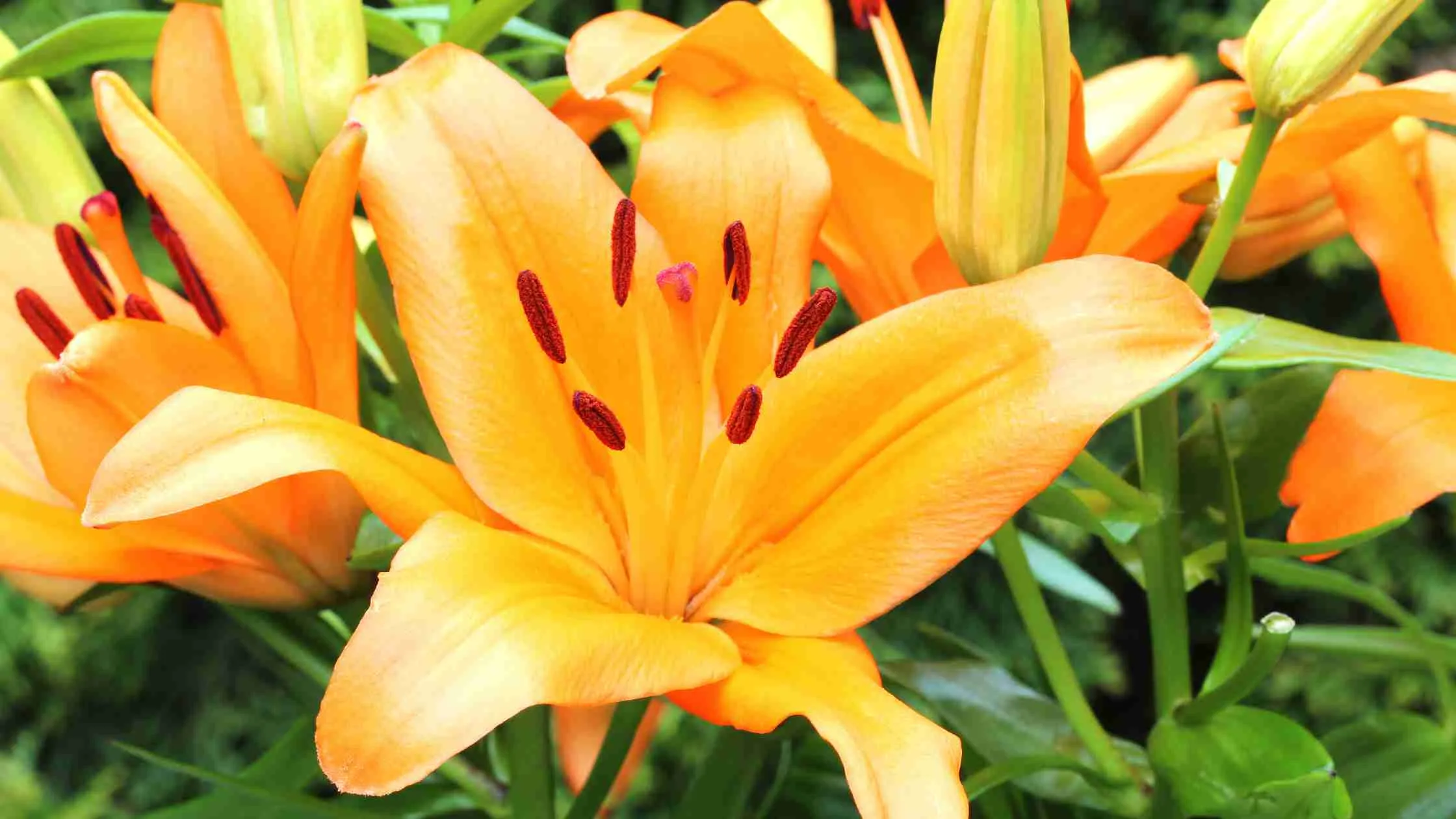
2. Nasturtiums
Nasturtiums are considered the most popular ornamental edible flowers. They have a huge variety and have bright color petals of red, yellow, and orange.
All parts of the nasturtium plants are edible. You can use its petals, leaves, and even seeds in different dishes. The leaves of this plant have a spicy and peppery flavor while the flowers come with a milder sweet flavor. Nasturtium-infused vinegar is ideal for salad dressings and dipping bread.
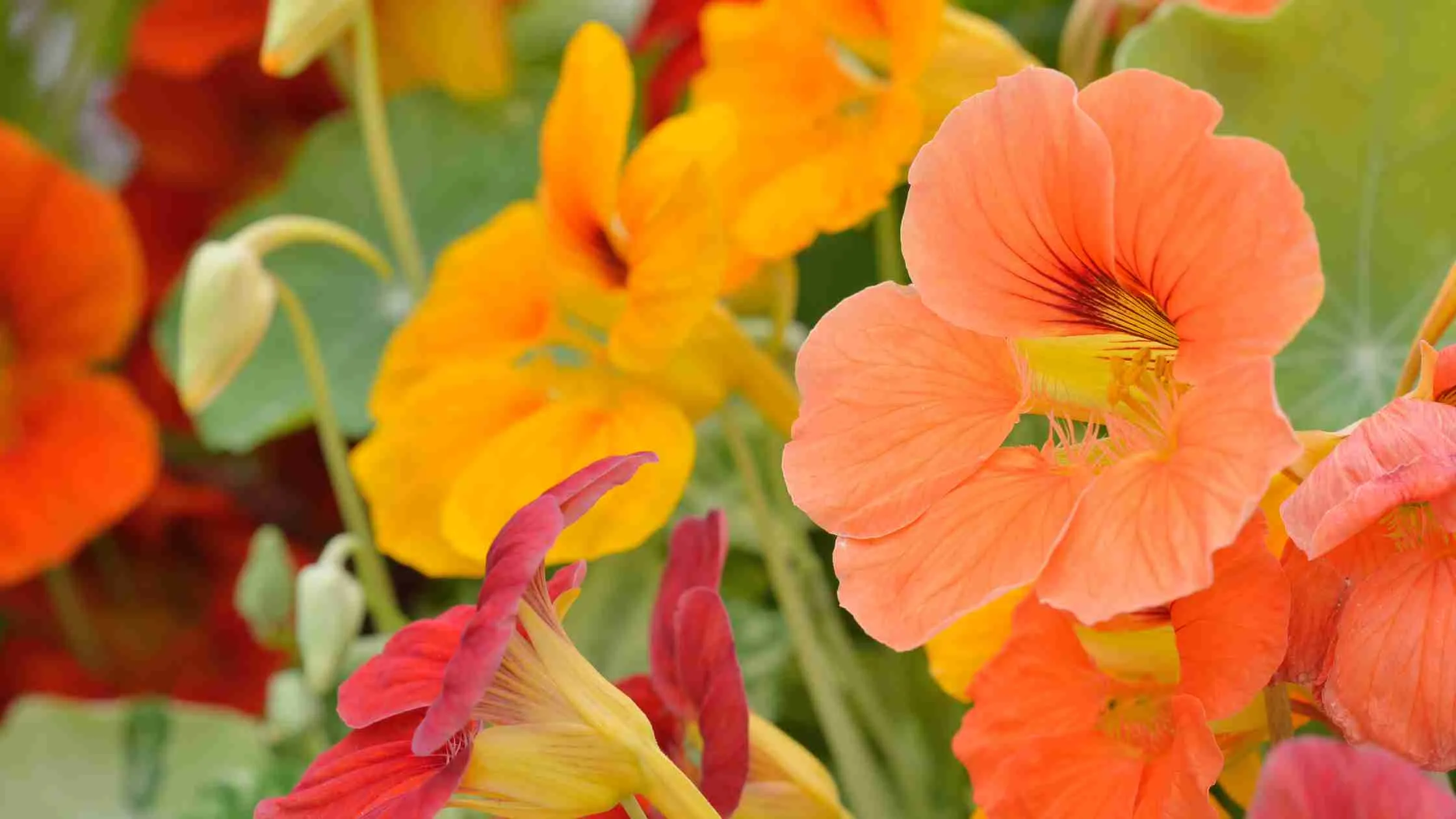
3. Roses
All parts of the rose are edible and have a slightly spicy flavor. The leaves of the rose plant taste like black tea. They can be used in making tea to enhance its flavor and aroma.
The rosebuds have a strong rose flavor that can also be used in tea or other dishes. Rosebuds are ideal when used after drying.
The petals of a rose flower are used to garnish desserts, drinks, and salads. You can also infuse them in honey for an enriched flavor. Before consuming the petals, remove the bitter-white portion.
You can even use the rose hips which are full of vitamin C and antioxidants. Rose hips have a crab apple taste. The best time to harvest rose hips is when they turn red or orange.
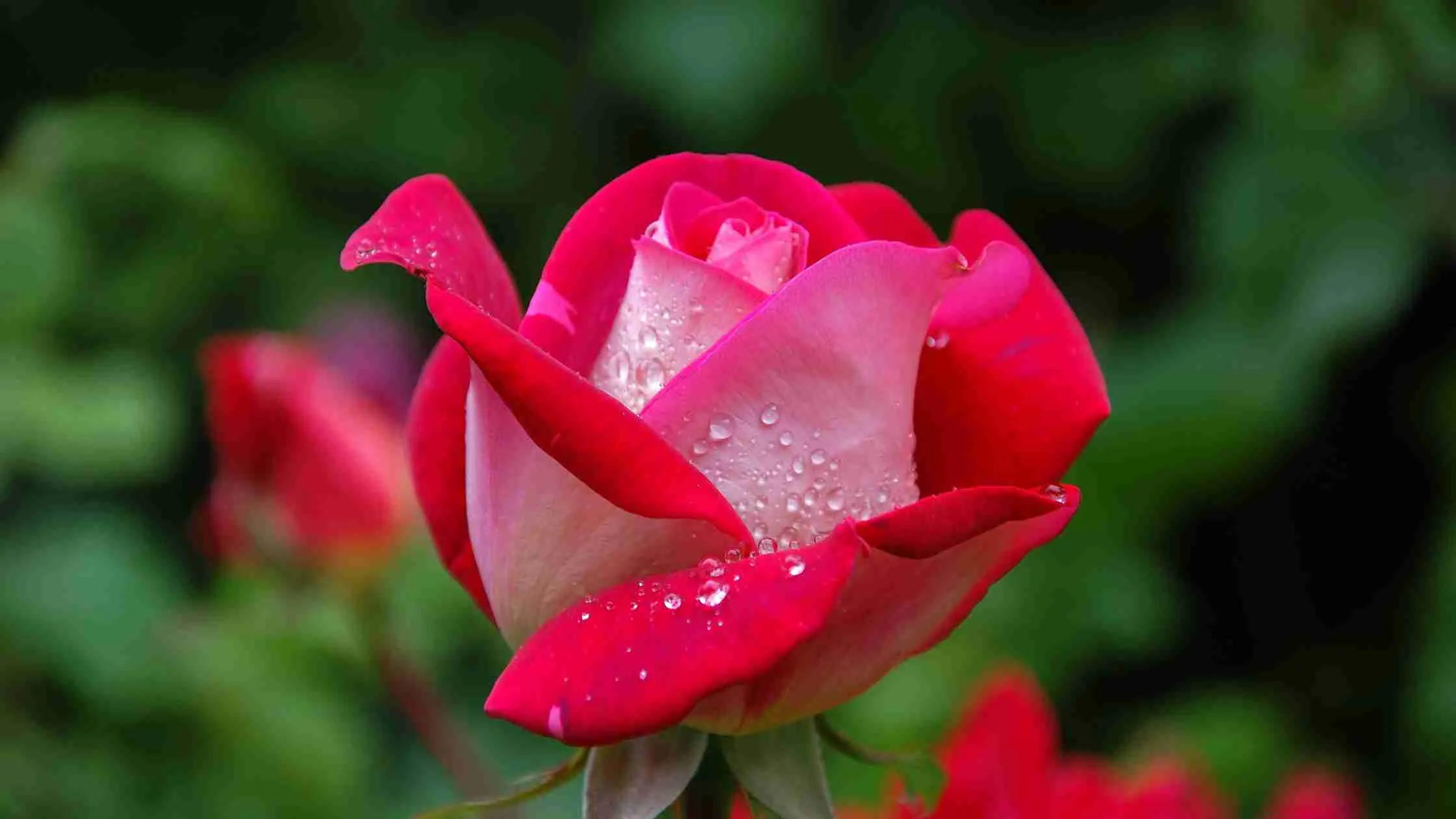
4. Calendula
Calendula is a yellow and orange flower that looks like a daisy. These are annual flowers that give beautiful color and spice to any dish. Calendula is also known as poor man’s saffron because it can be used in place of saffron to give a beautiful saffron color to dishes and bread.
You can cook them with any dish or add their petals to salad for a peppery flavor. The flower can also be used as a whole in stir-fries, or any rice dish.
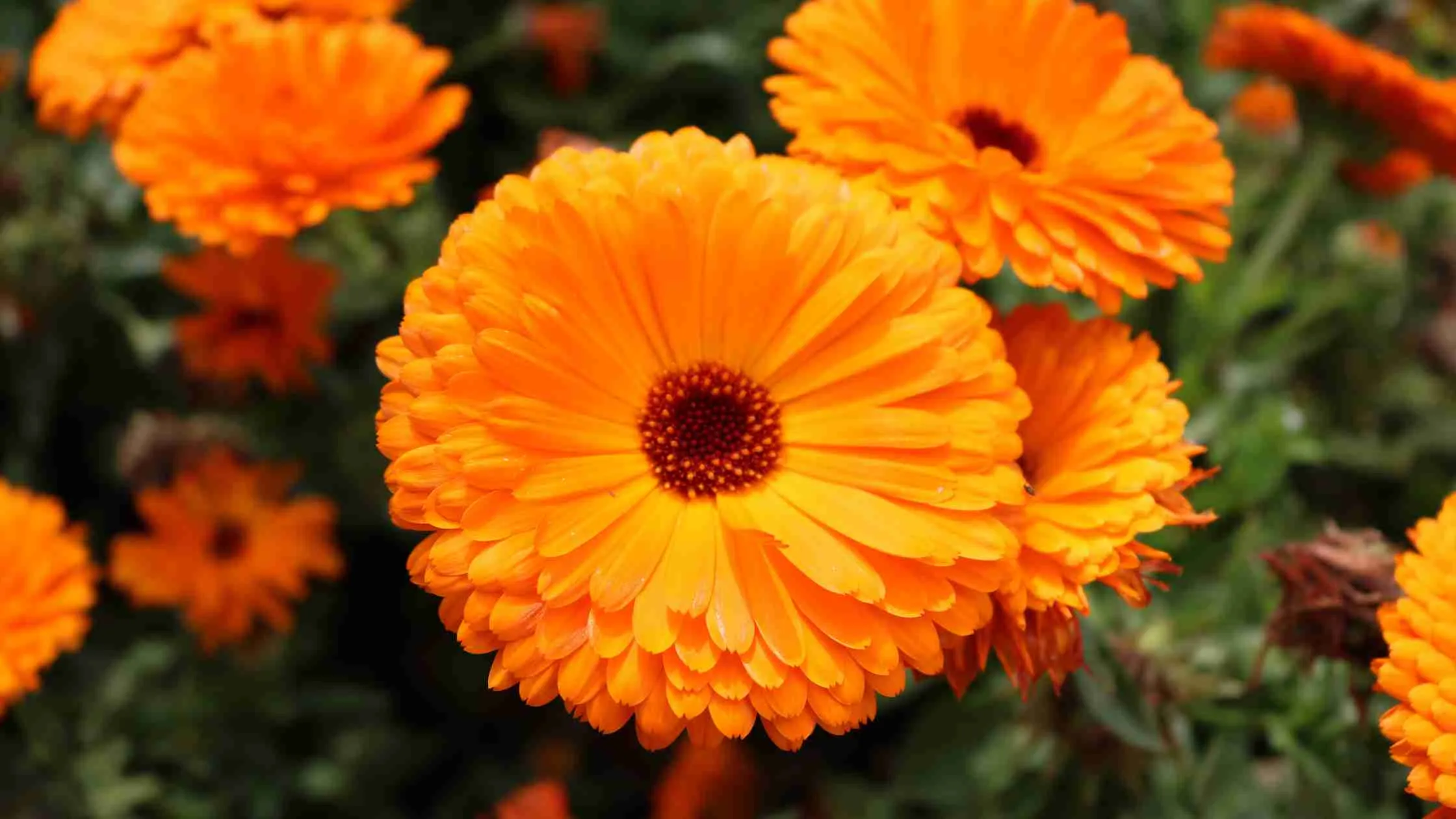
5. Marigolds
Some marigolds, like Lemon Gem and Tangerine Gem, are edible. Marigolds have bright colors like yellow and orange and they taste delightful.
You can also use the flowers in ice cubes. To make marigold ice cubes, you need to fill the ice-cube tray half with water and then add the flowers to each cube. Freeze the water overnight. The next day, fill the tray with water and freeze it again to get adorable marigold ice cubes.
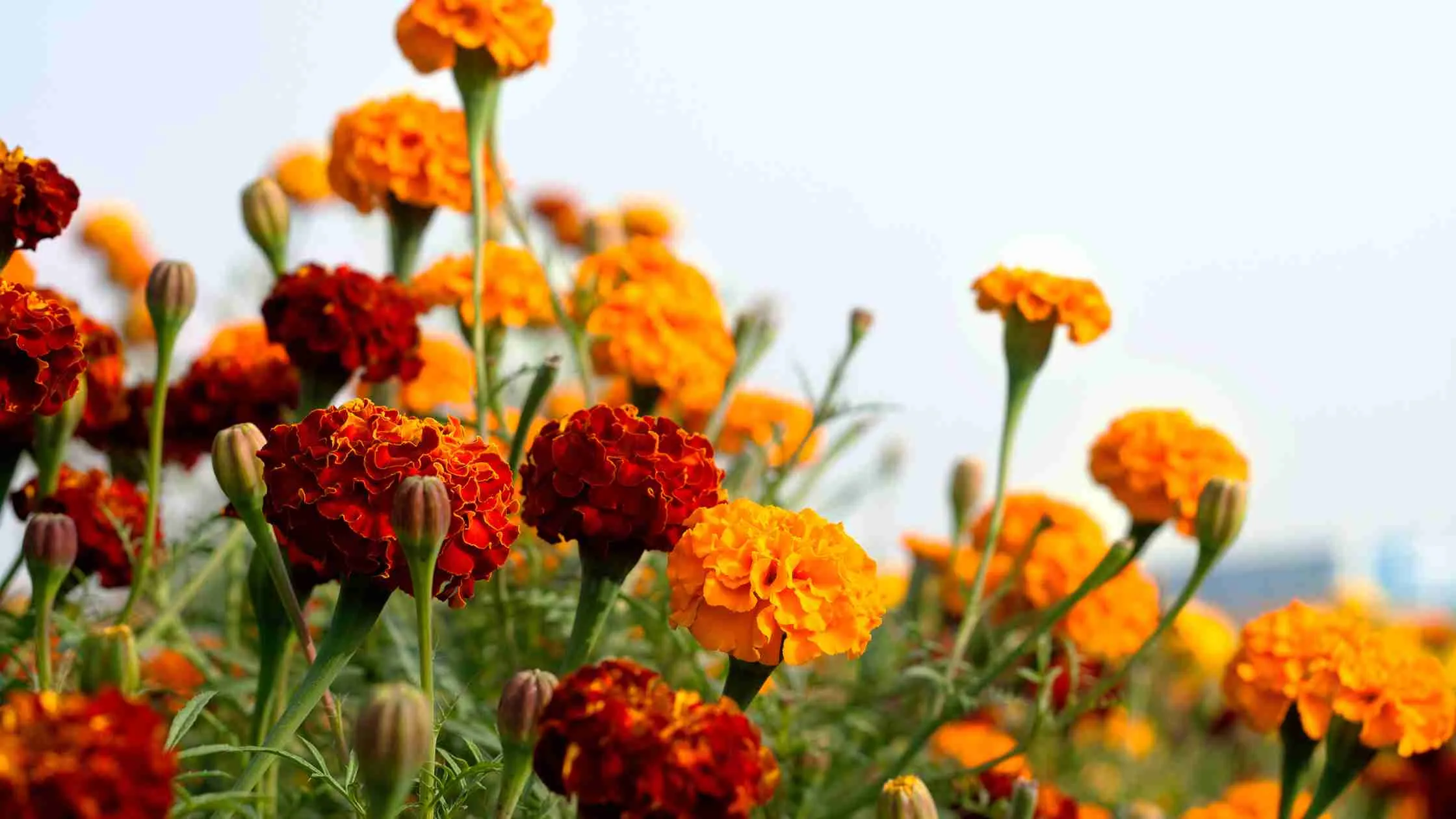
6. Hostas
Hostas are very useful ornamental plants. The whole plant is edible - you can eat the flowers and leaves either raw or cooked. You can even try the stolons (stem that grows along the ground surface in stir-fry recipes.
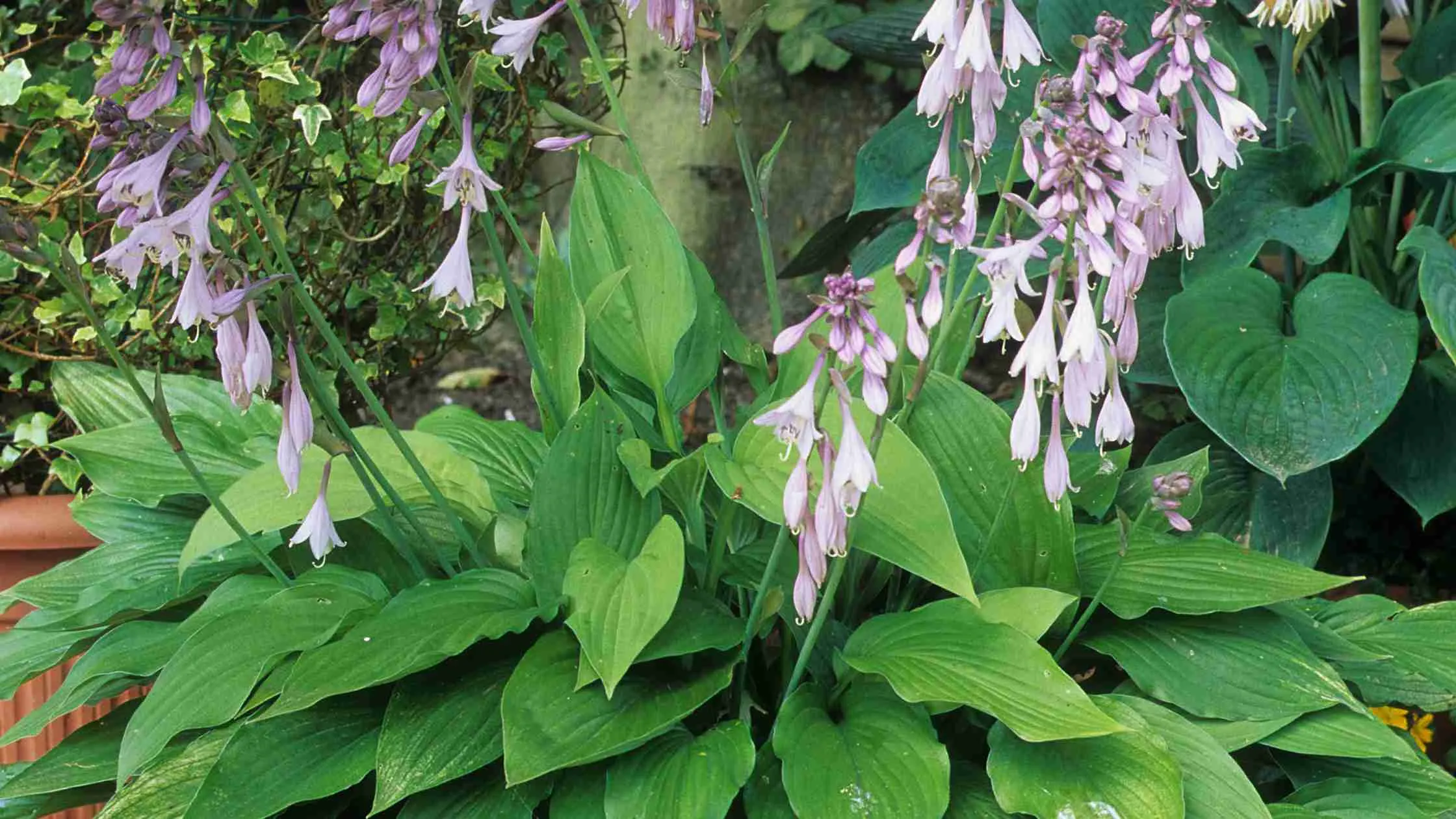
7. Borage
The blue flowers of the borage plant taste like cucumbers - making them excellent for salads and summer drinks. You can either add them directly to your summer drinks of freeze them in ice cubes.
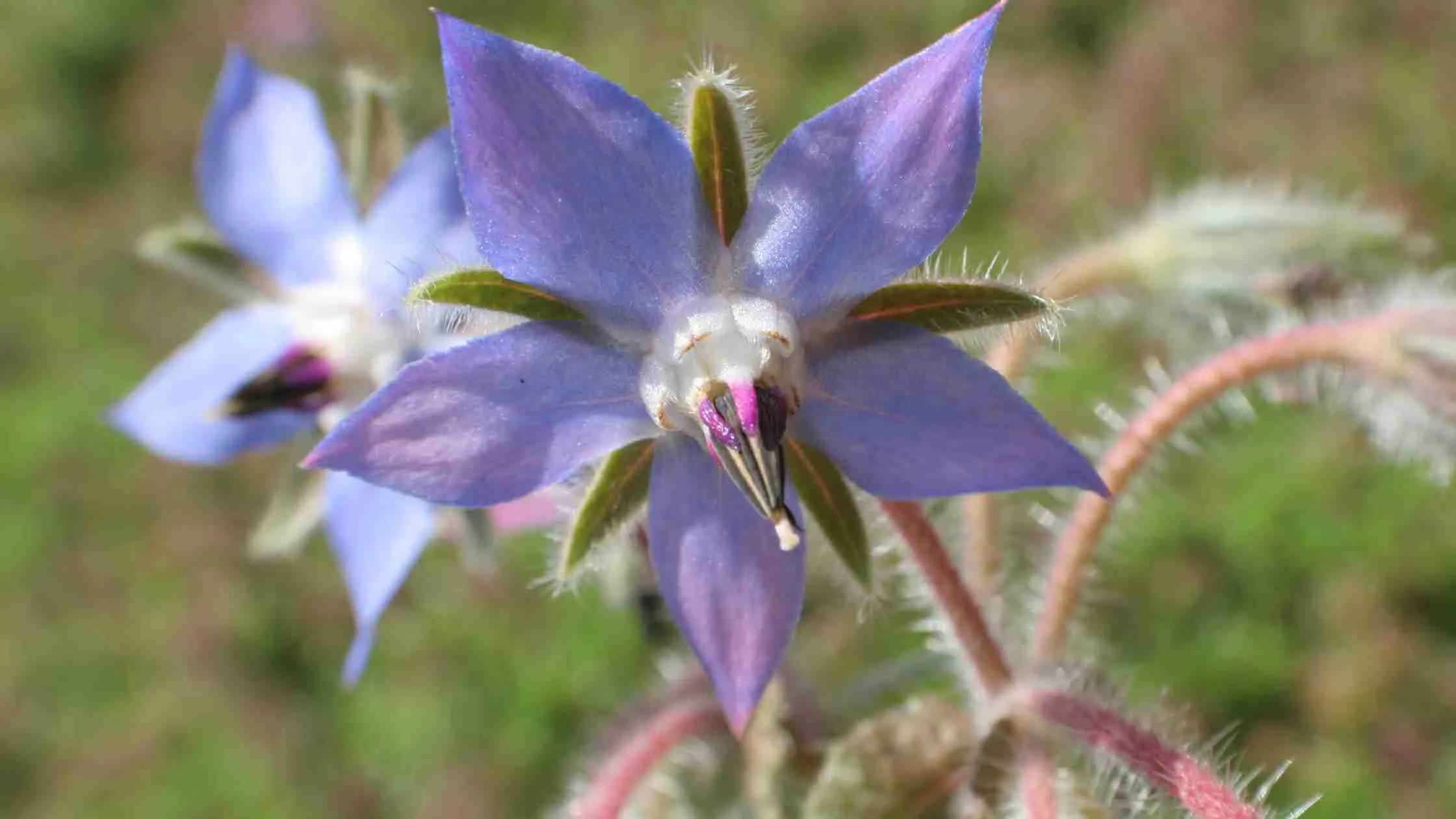
8. Violas and Violets
Violas and violets have a mild, slightly sweet flavor. They are easy to harvest as the whole flower can be consumed. Violas and violets can be used in salads, sandwiches, and even candied for cake decorations.
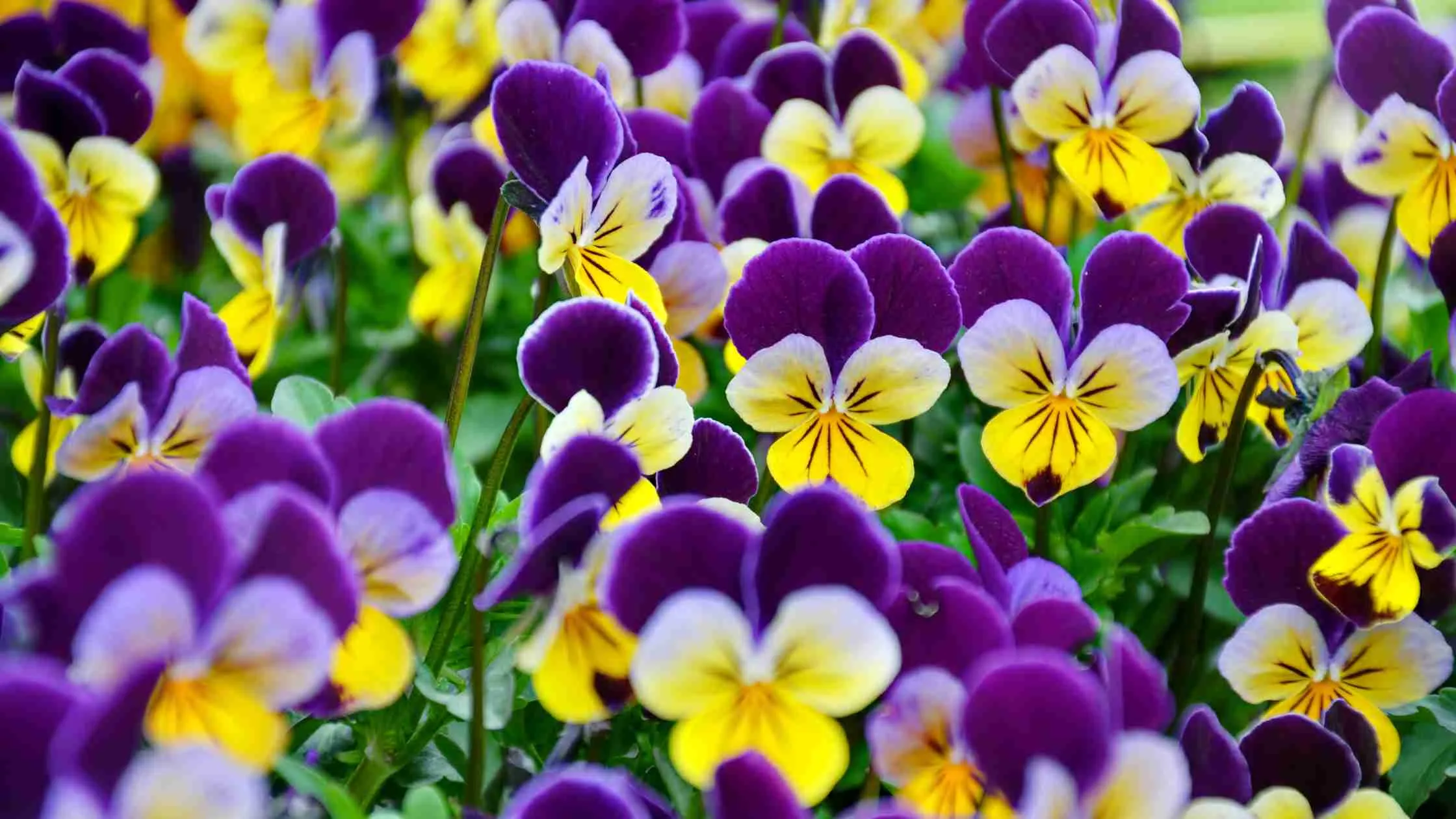
9. Pansies
Like violas and violets, pansies have a mild lettuce-like taste, which makes them a good option in salads. With their range of hues, they look good on any plate and make a quick harvest as the whole flower can be eaten.
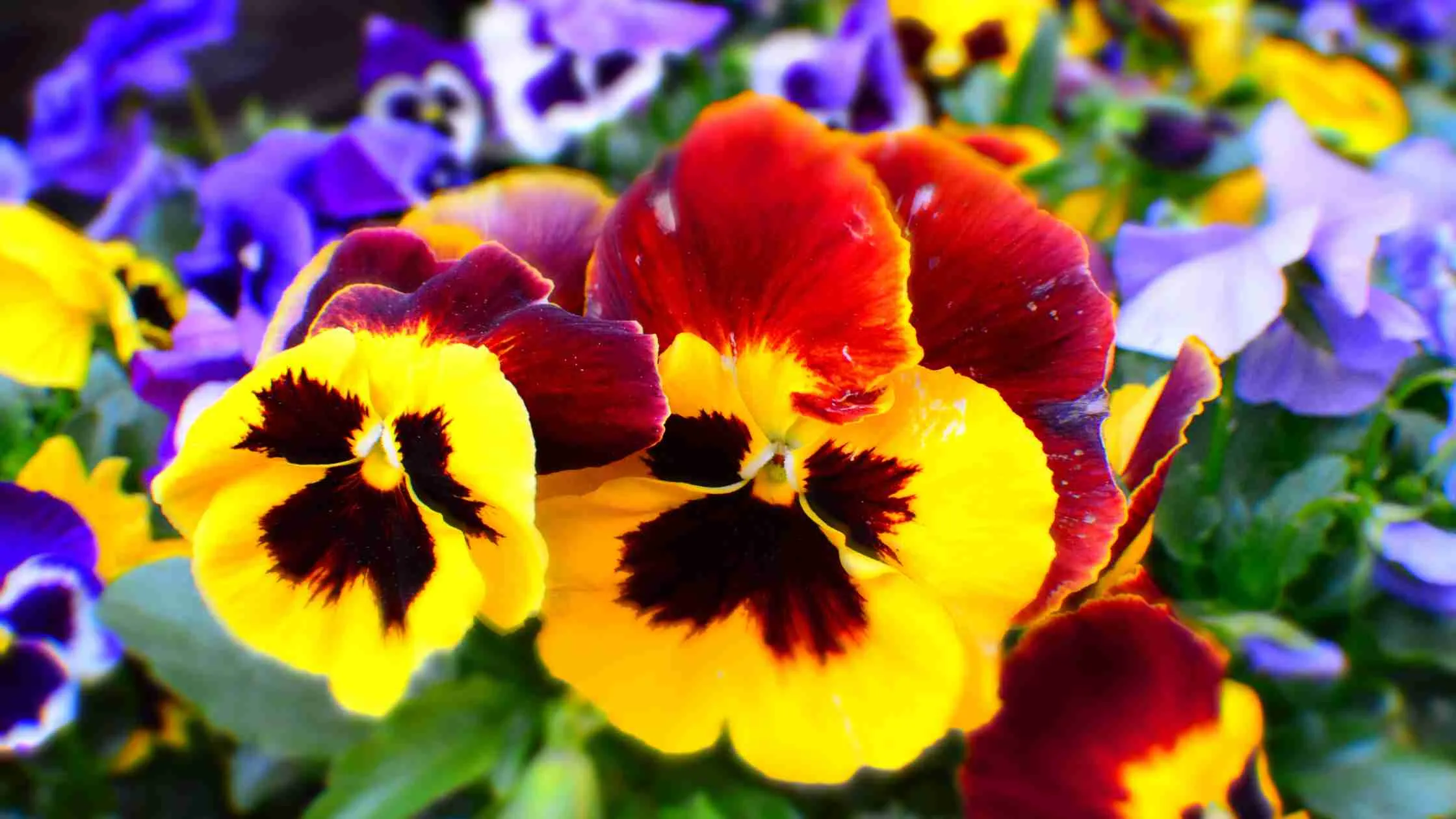
10. Carnations
Carnations are said to taste like cloves with a slight peppery flavor. They can be used in savory dishes or sweet desserts.

11. Sunflowers
You may be familiar with sunflowers from eating sunflower seeds or even using sunflower oil. You can also eat the petals and the buds can be steamed the same way as artichokes.
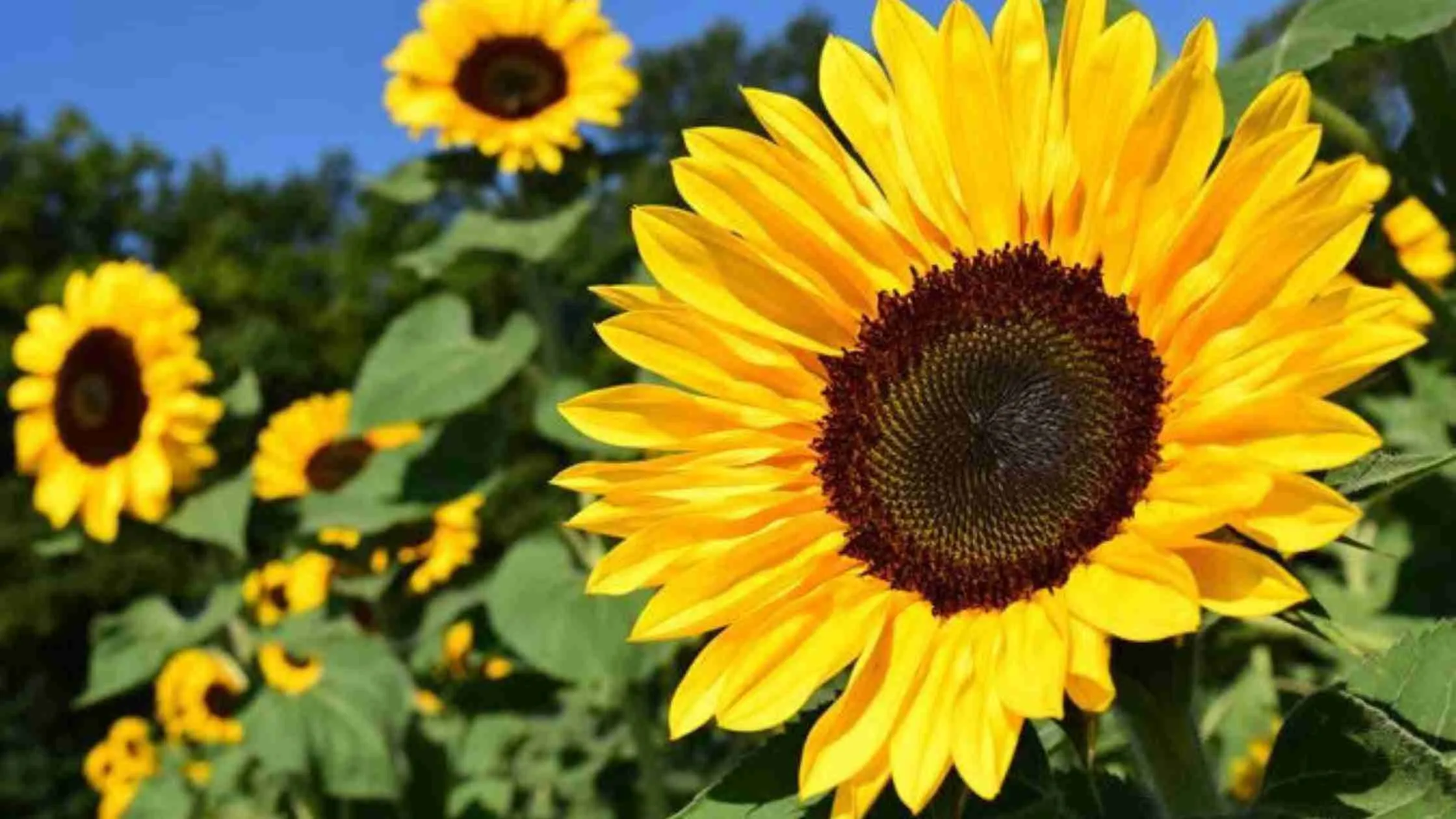
12. Tulips
Tulip petals have a sweet lettuce flavor with a slightly peppery aftertaste.
Tulips' large petals can be used in spring salads, platters of sweet canapés or as scoops for ice cream or other desserts.
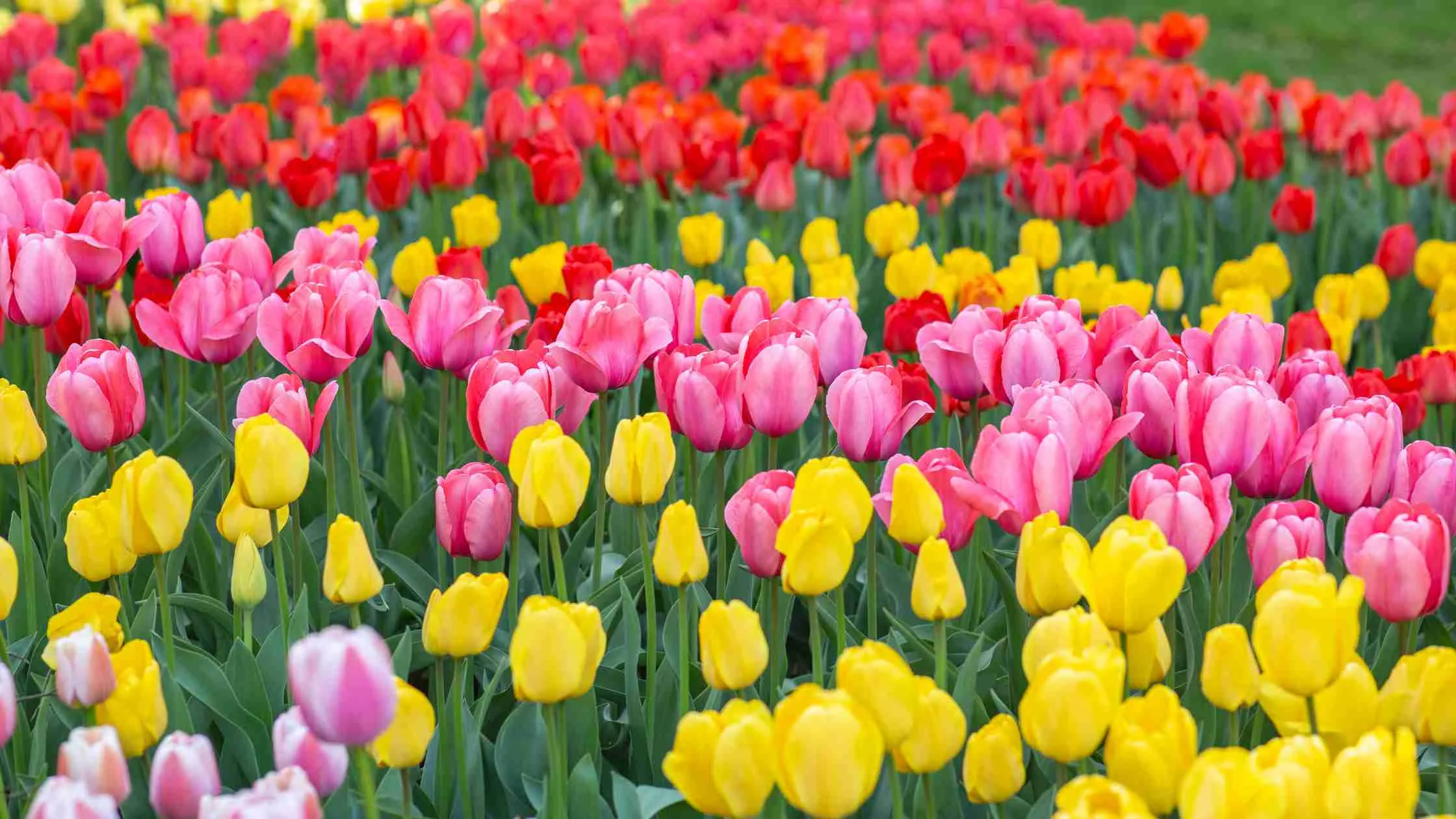
13. Lavender
Not only does lavender smell good, but it can also be added to baked goods and ice cream. The flavor is mildly sweet though strong.
14. Chrysanthemums
Chrysanthemums vary in taste depending on the variety. Some are peppery, some are mild in flavor and others are sweet. You may have to taste a few before you know which ones you enjoy the most.
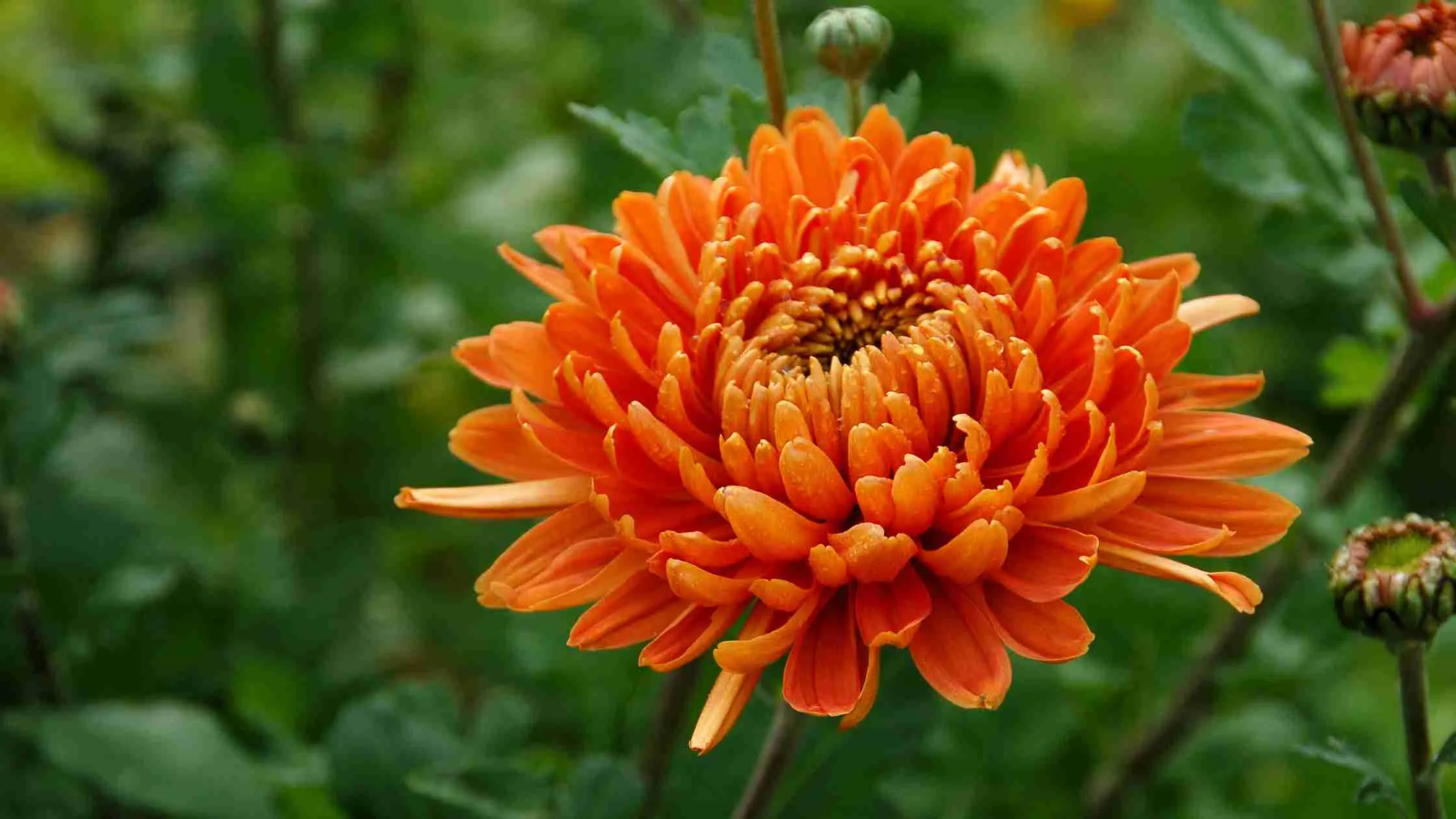
Edible Flowers From Fruits And Vegetables
Where edible ornamental flowers give a very pleasing look to your garden, edible flowers from vegetables and fruits give you a lot of produce.
Some flowers from veggie- and fruit plants are edible and they also look very beautiful. If you have a kitchen garden then these plants will increase your seasonal yield by giving you the most from every plant.
Here are some edible flowers that you might have been growing in your kitchen garden in Brampton but never thought of using for eating.
15. Apple Blossom
Yes, you read it right! Apple blossoms are edible and they taste heavenly. The floral flavor of apple blossom can be used in ice cream. You can also garnish salads and desserts with these delicious flower petals.

Apple trees are very prone to pests and several diseases so they are usually sprayed with chemicals to manage these pests and diseases. Before consuming apple blossoms make sure they are fit for consumption.
16. Squash Blossom
Squash flowers have a mild flavor of the squash. The male flowers of plants are better than the female flowers because the female ones later turn to fruits.
As the squash plant develops the flush of the male flower before the female flower, you can pick them easily. Pick the male flowers with their stems when they are fully developed and swollen but before they are open. Always pick the flowers in the early morning.
Squash flowers can be used in cooking, baking, or garnishing. You can stuff them with cheese, rice, or any lentils, bake them as a gratin and deep fry them. If you are making squash flower fritters, keep the stems with the flowers for a crispy taste.

17. Elderflower
Just like elderberry, elderflower is also edible. The large umbel-shaped flower heads have sweet notes of pear and lychee.
These flowers can be deep-fried, infused in syrups, jellies, and ice creams, and dried for tea. You can also use them to garnish desserts.
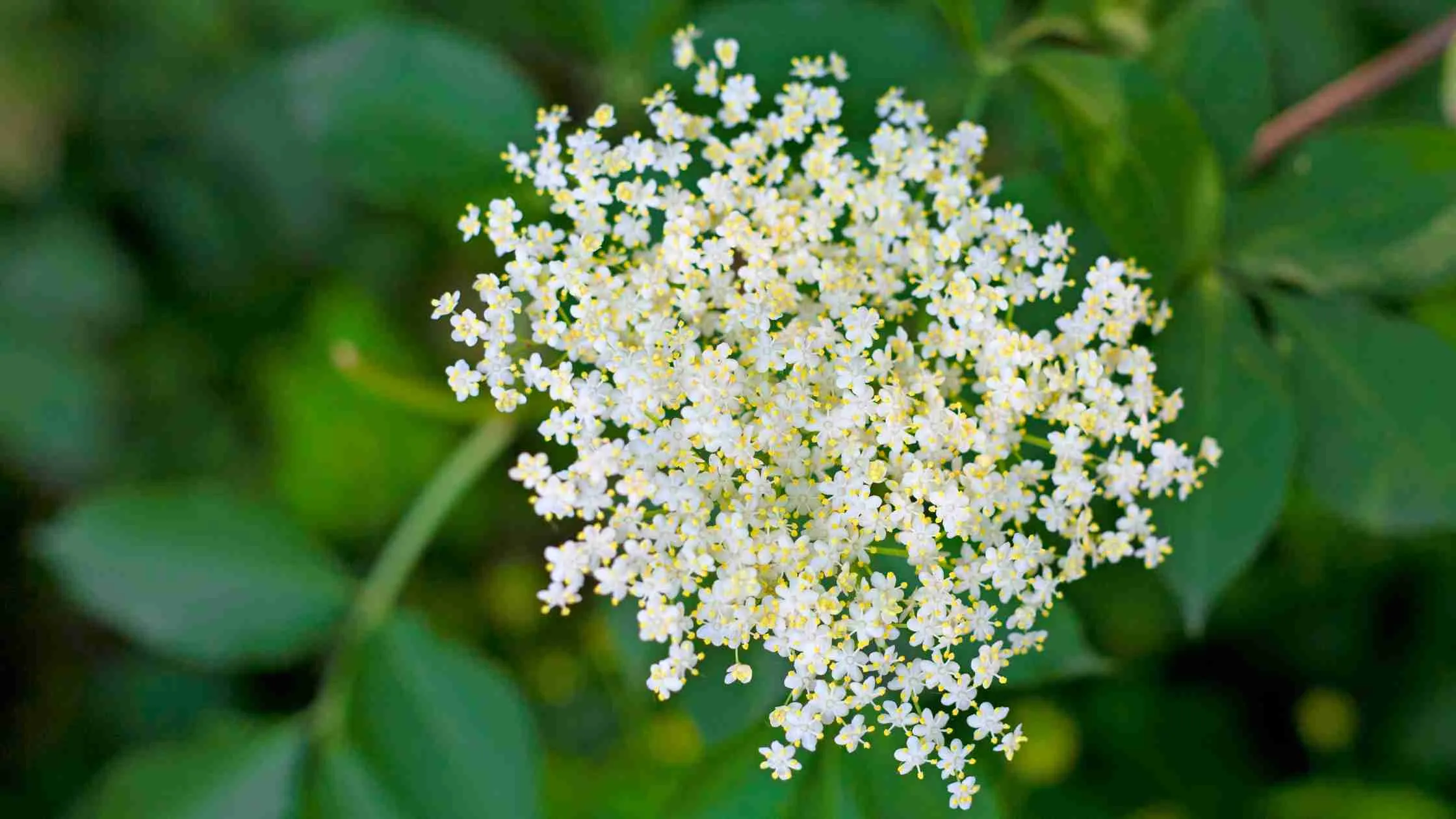
18. Pea Flowers
You might have some pea plants in your garden but most likely have never thought of using their flowers.
The only drawback of using pea flowers is that you are reducing your pea pod production because these flowers turn into vegetables later.
Pea flowers have a mild flavor of peas and are an ideal addition to salads.
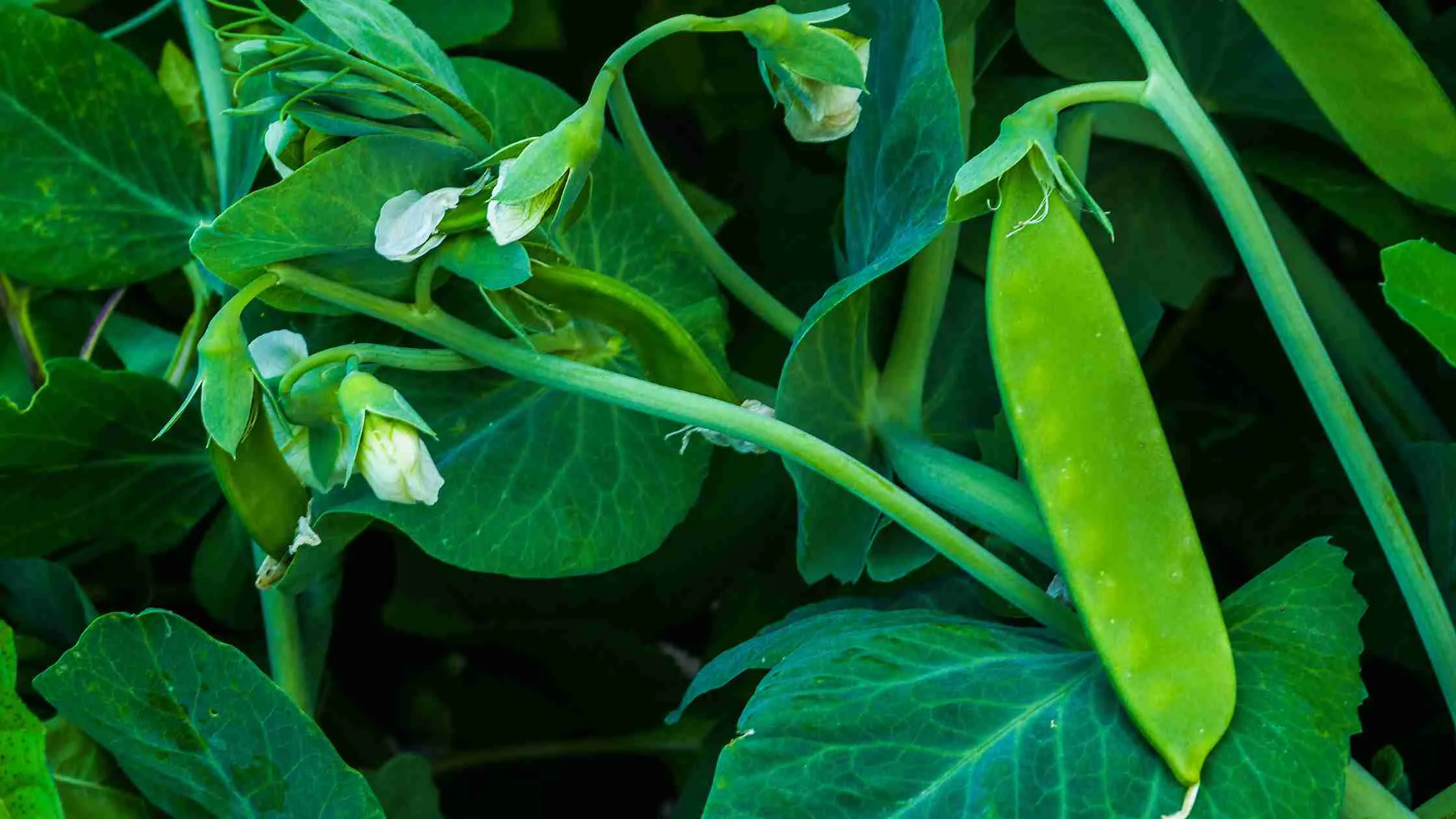
19. Onion Flowers
Onions plants are primarily grown for their bulbs and stems but you can also eat their flowers. They have a mild onion flavor making them perfect to serve with many dishes.
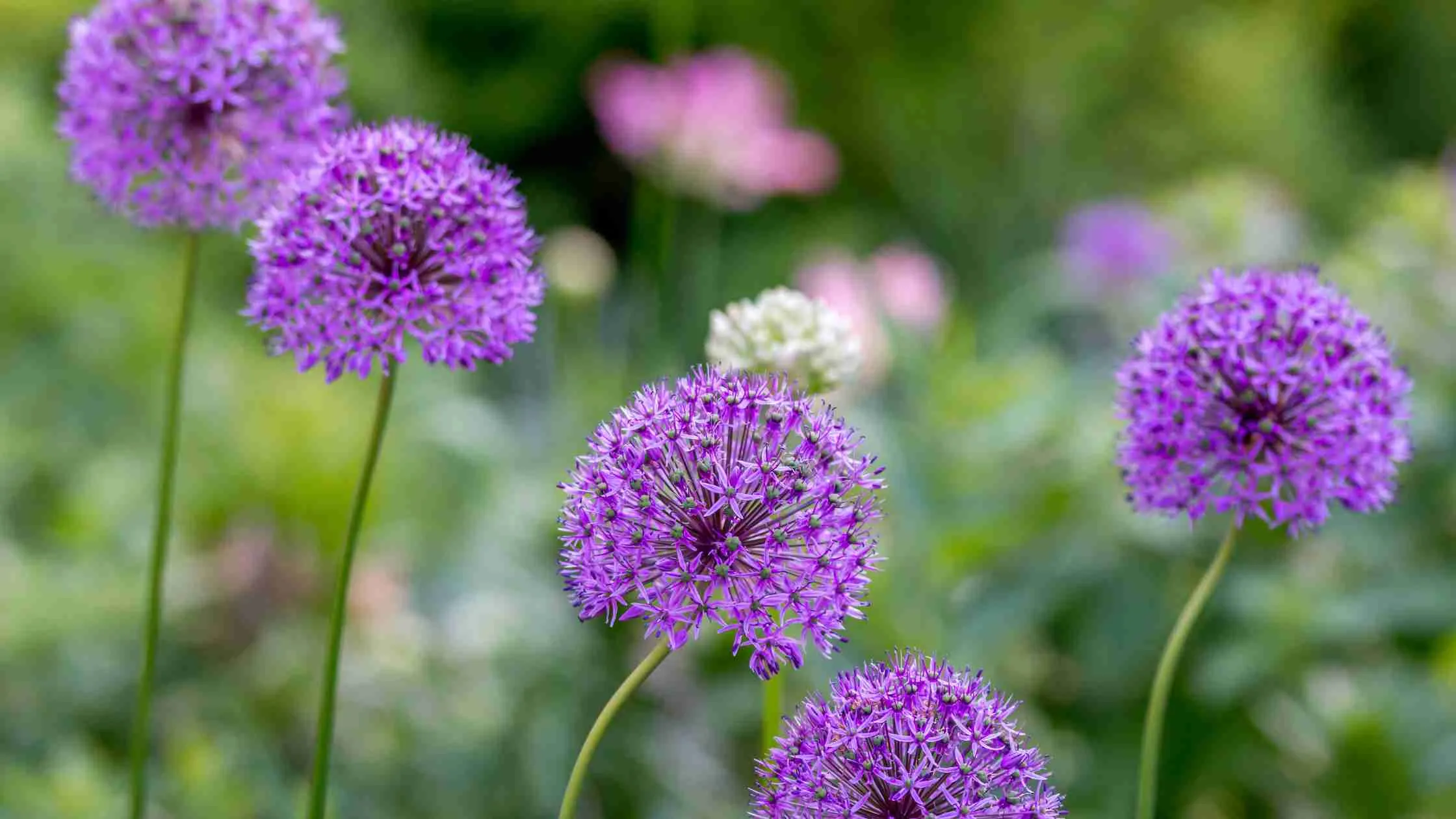
20. Cherry Blossoms
The cherry flowers are not only adorable but are also very flavorful. They are used in many traditional Japanese teas, cookies, candies, and other sweets like mochi cakes.
The blossoms are pickled before using in different recipes. You can even preserve cherry blossoms to be used in teas and cocktails.

21. Pak Choi Flowers
The flowering shoots of pak choi and many other Asian greens can also be added to stir-fries and salads.
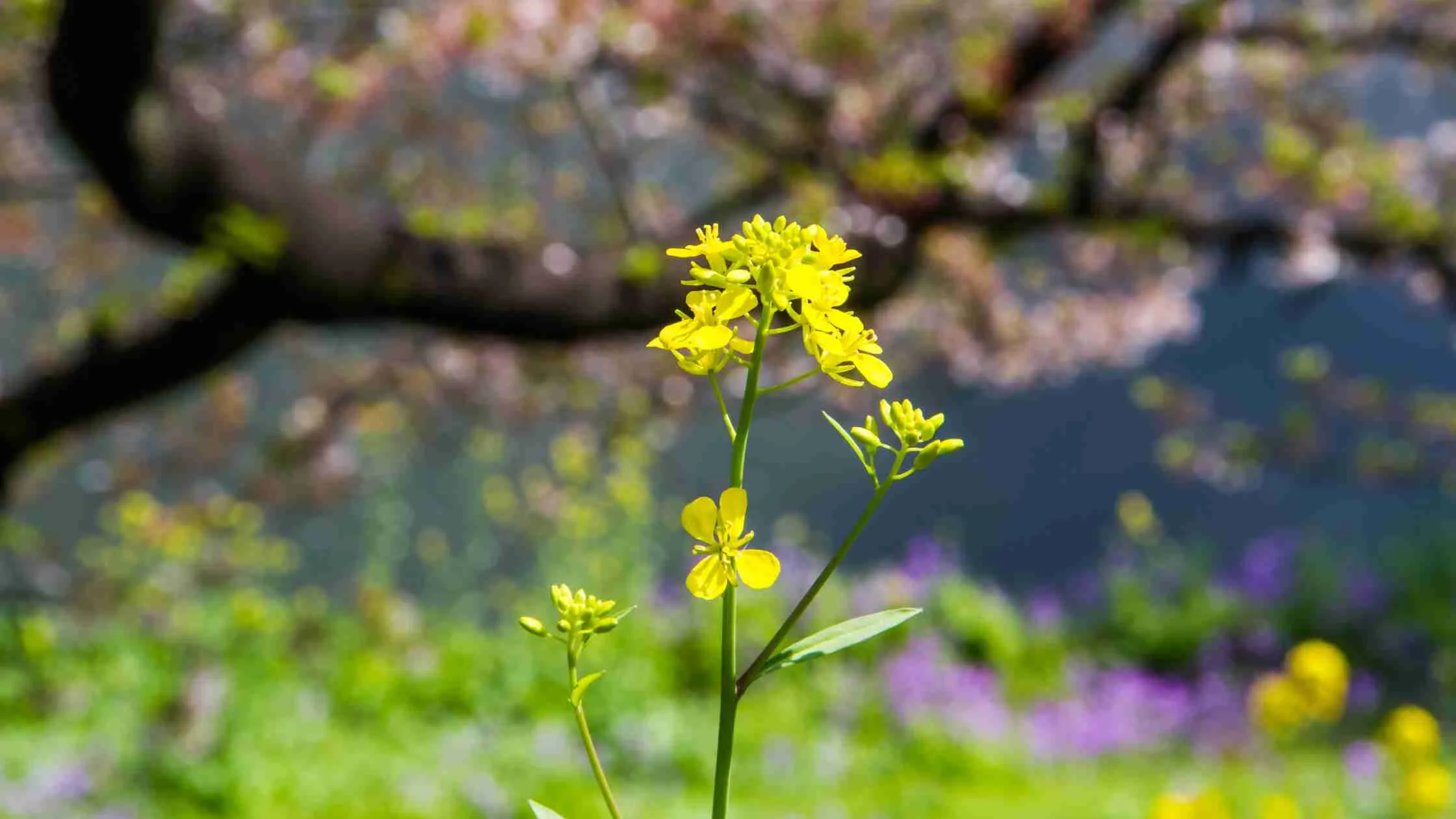
22. Broad Bean Flowers
The broad bean's mild bean flavor can also be used in salads and sandwiches. Similar to peas, taking the flowers will result in a reduction in bean production.
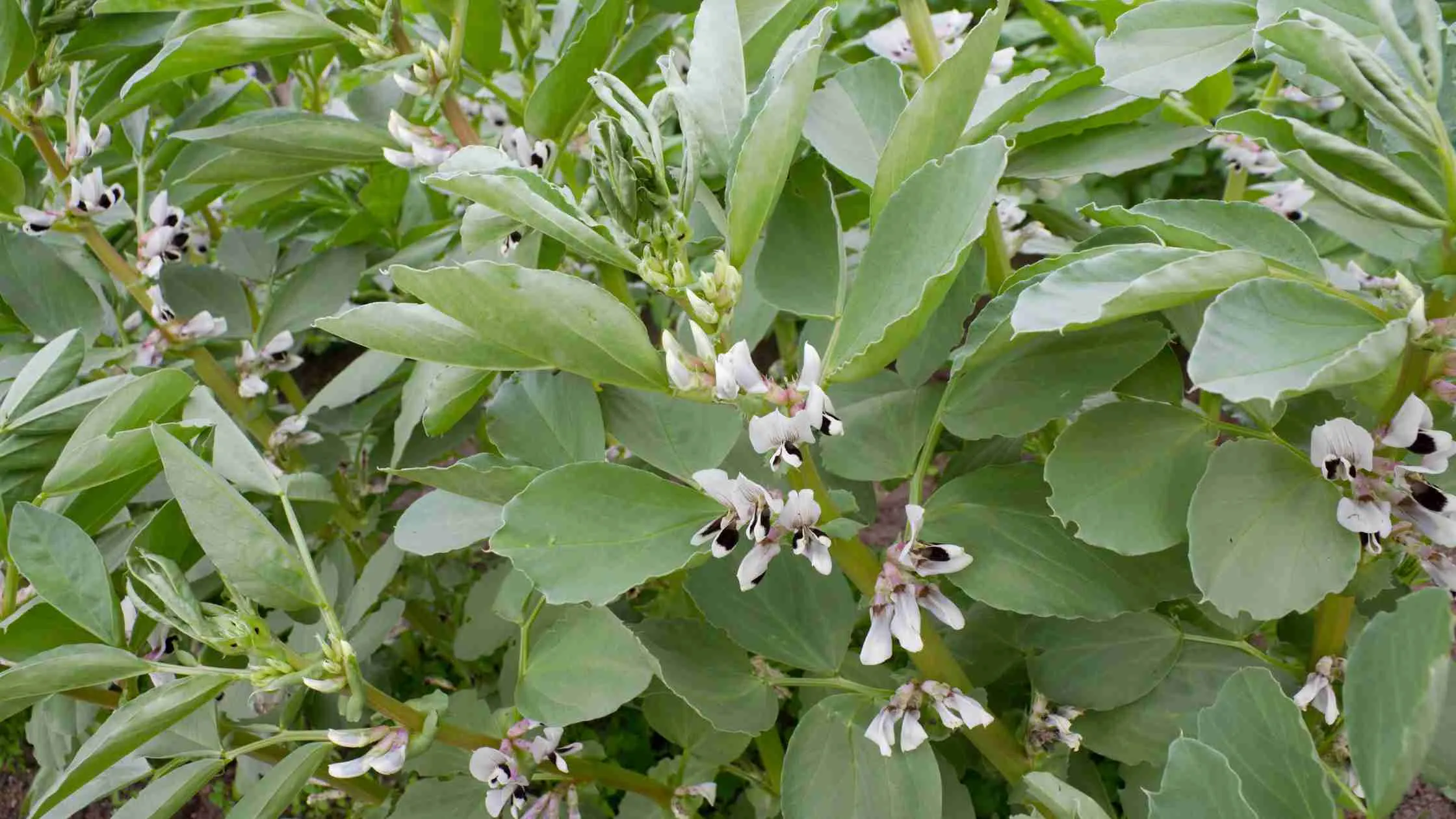
Edible Flowers That Are Usually Considered Weeds
There are some "weeds" whose blooms are edible – and are good for you! Some weeds are also good for nature - encouraging wildlife. Some examples of edible "weed" flowers are:
- Dandelions
Yes, those annoying plants that pop up everywhere and take over the garden are both edible and good for wildlife! The leaves and green ends of the flowers are bitter but the petals and stamen (male part of the flower) are mildly sweet.Flowers can be turned into wine or jellies. Both the flower buds and flowers can be fried or made into sweet fritters.
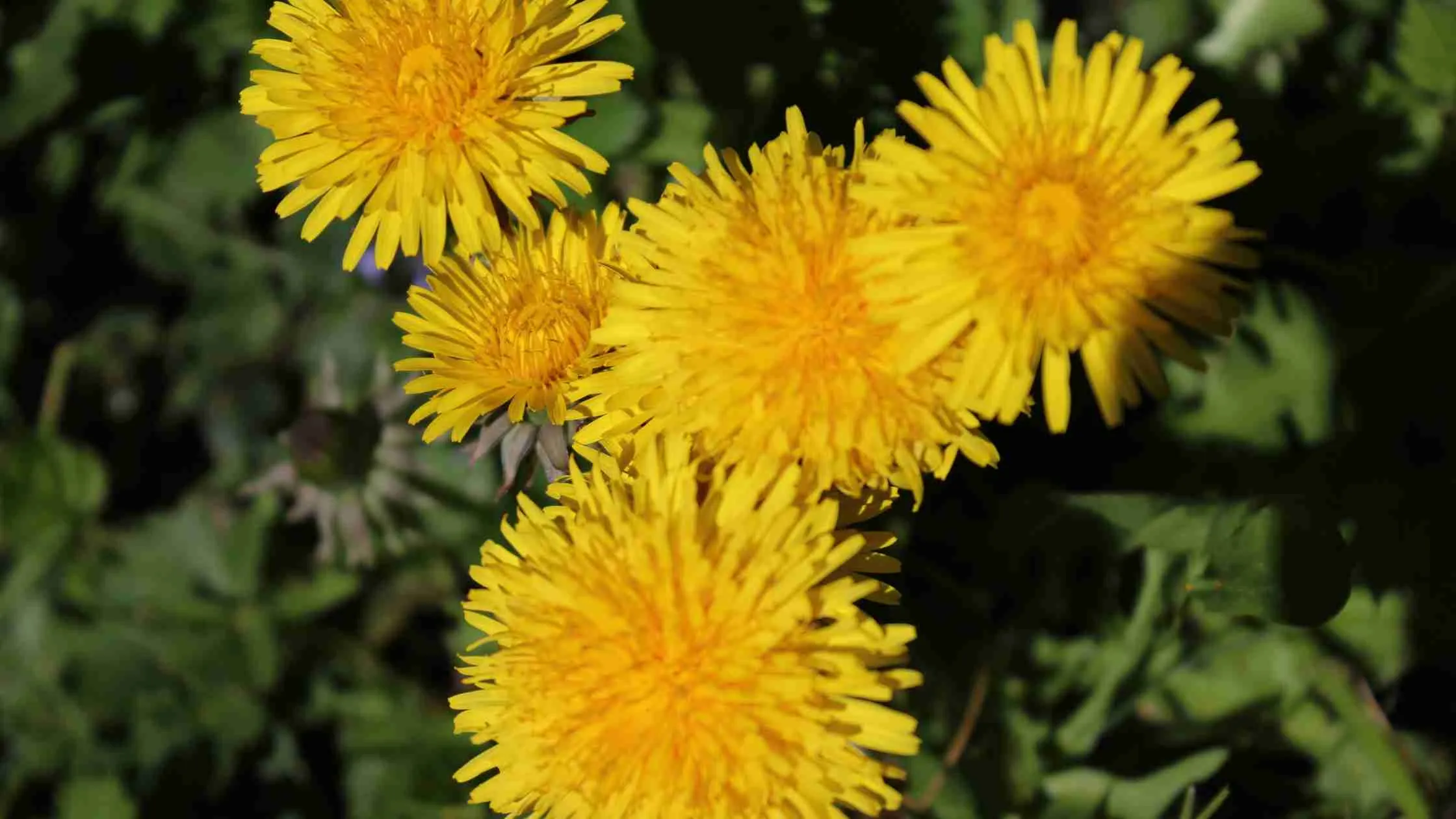
- Daisies
The little daisy flowers you find all over your lawn can be eaten in salads or sandwiches. Flower buds can be pickled and used as an alternative to capers.
- Chamomile Flowers
You may find chamomile growing wild in your garden. The flowers are used to make calming and relaxing tea. It helps aid sleep and has anti-inflammatory properties. Chamomile flowers can also be used in jellies, baked goods, cocktails, ice cream, and oil.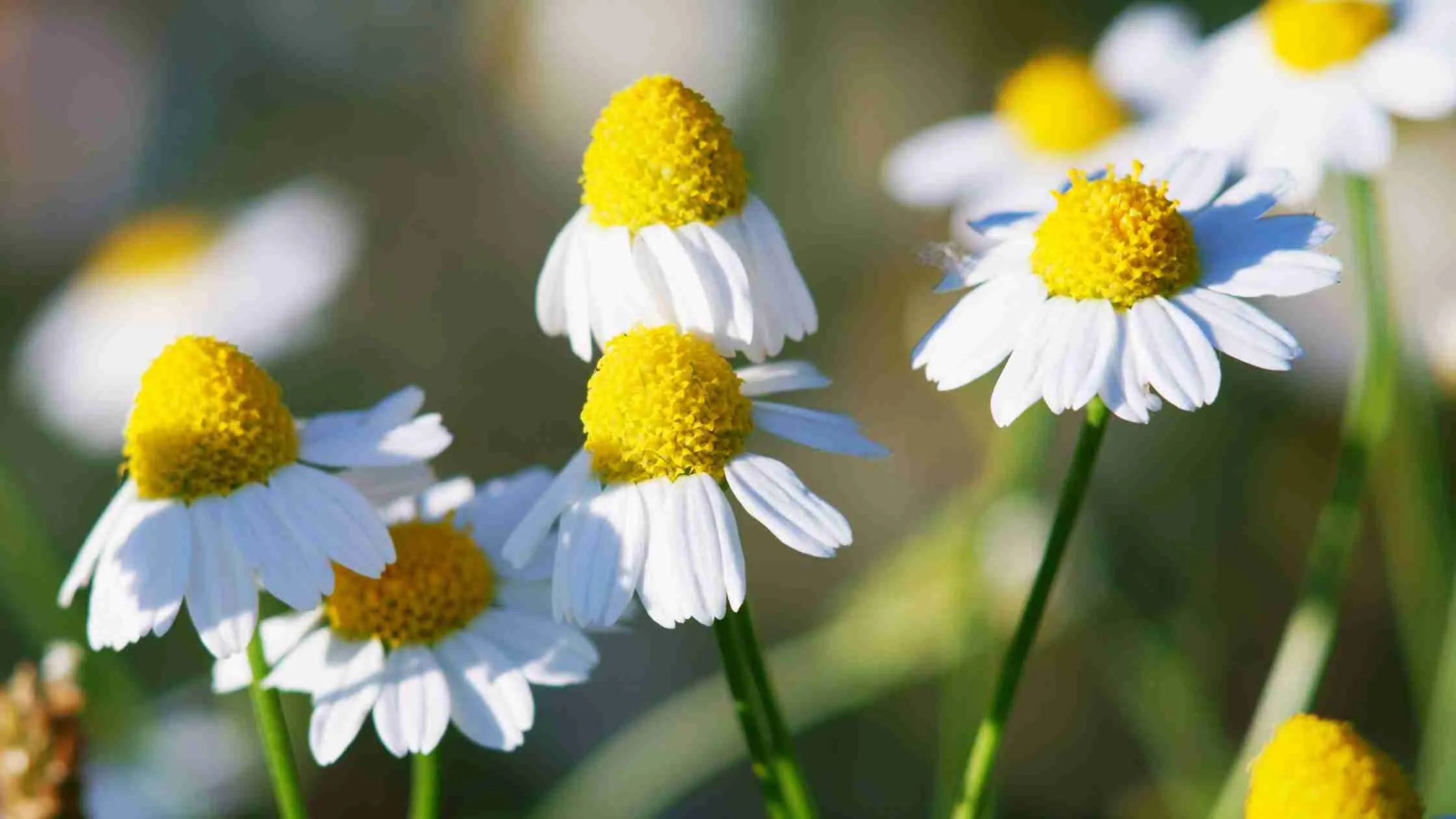
Final Words
Edible flowering plants not only give a colorful look to your garden but also help you yield maximum produce from your plants. You can start by trying any of the above-mentioned plants in your garden for beautiful edible flowers.

